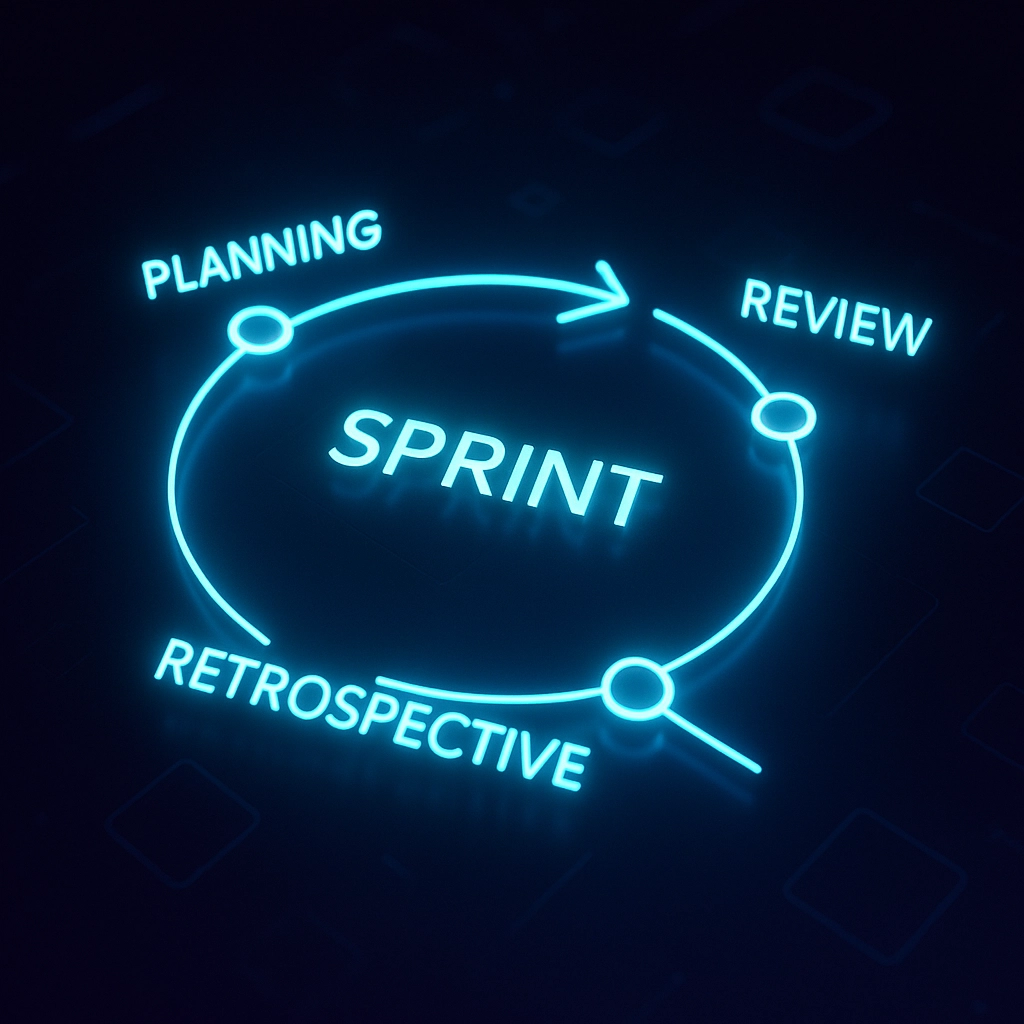October 1, 2025
Agile Project Kickoff: Setting Your Software Project Up for Success

Embracing the Agile Kickoff Mindset
Agile project kickoffs are where creativity meets structure—a launchpad to align vision, people, and process. Unlike old-school, all-hands-on-deck meetings that try to plan every detail, an agile kickoff is about finding the sweet spot between clarity and flexibility. Get the foundation right, and you’ll empower your team to solve problems fast and deliver value early and often.
Why Agile Kickoffs Matter for Modern Software Projects
Software projects are notorious for wrong turns: shifting requirements, misunderstood goals, and siloed communication. Even the best ideas can get bogged down without a strong launch. In agile, the kickoff isn’t about creating a blueprint—it’s about establishing shared purpose, setting up smooth collaboration, and defining how everyone pulls together. It’s no exaggeration: this meeting can mean the difference between a project that soars and one that fizzles out.
Setting the Stage: Purpose, Vision & Goals
Before anyone cuts code or spins up a repo, the team needs a crystal-clear sense of “Why?”
Clarify the Project’s Purpose:
What problem are we solving? Who feels it? Why now? Connecting the project to sharp business outcomes keeps everyone motivated and focused. If you can’t draw a straight line from user need to business value, pause and revisit.Identify Measurable Goals:
What does success look like—fewer support calls, a 30% jump in mobile users, less time to onboard clients? Agreeing on what you’ll measure helps the team pivot together if adjustments are needed.Define the Big Milestones:
Agile avoids rigid, months-long schedules. Instead, outline key deliverables and major reviews as signposts. This helps everyone prioritize and plan.

Success Criteria: Getting on the Same Page About “Done”
“Done” in agile is a team sport—it’s not just compiling code or checking the last box. It means the feature works, meets user needs, passes QA, and is ready for real-world use.
- Draft a Team Definition of Done:
This should include business acceptance, testing standards, user documentation, and anything else that constitutes “release ready.” - Document Success Metrics:
From app performance to user satisfaction, make sure everyone can point to the “win.”
Communication: Building Healthy Collaboration
A big part of agile’s secret sauce is constant, open communication. Kickoff is the right time to establish how information will flow.
Stakeholder Updates:
Some folks want every update; others just need big milestones. Decide how you’ll break news—project dashboard? Weekly emails? In-person demos?
Team Agreements:
Outline how you’ll work together, like:
- How often you’ll catch up (standups, retros, etc.)
- Expectations for responsiveness—when urgent means three hours, not three days
- Whether messages in Slack at 10pm need a reply (hopefully not!)
Tools and Channels:
Agree on where core conversation happens (Slack, Teams, Zoom), where documentation lives, and who’s the go-to for different topics. Don’t let confusion fester; make sure everyone’s onboard with the toolset.

Process Foundations: How You’ll Get Stuff Done
Agile Cadence and Rituals
These are more than just calendar placeholders—they bind your workflow.
- Sprint or Iteration Length:
Two weeks is typical, but tailor it to your context. - Start/End Days:
Choose set days for starting and reviewing iterations to streamline habits. - Ceremonies:
Kickoff reaffirms which agile ceremonies are essential—planning, demos, retrospectives—with times blocked from day one.
Work-In-Process Limits:
Call out limits to avoid overload and bottlenecks. Keeping work streams focused cuts confusion and delivers value faster.
Technical Groundwork
Prepare for smooth developer onboarding and avoid frustrating surprises later:
- Define Backlog Organization:
Agree on how features, bugs, and chores are tracked and prioritized. - Establish Standards:
Code style guides, pull request protocols, deployment processes—write them down and revisit regularly. - Identify Platforms & Tools:
Make decisions up front about frameworks, environments, and supported platforms so there’s no mid-project scramble.

Roles, Team Structure & Responsibilities
Crystal-clear roles are agile’s insurance policy against “I thought you had that!” moments.
- Product Owner/Client Contact:
Who’s setting priorities and fielding business-side questions? - Scrum Master/Project Lead:
Who’s unblocking the team and keeping ceremonies efficient? - Developers, Designers, QA:
Who’s doing what? Are any roles flexible?
Even in a small crew, spelling this out avoids drama and dots the “i’s” on accountability.
- Who Talks to Whom:
If a stakeholder goes rogue, who pulls them back in? Decide up front who manages key client or stakeholder relationships.
Required Materials & Documentation for Kickoff
To keep things agile (read: light but effective), prep these materials:
- Project Brief:
One-pager on the “who, what, why, and how.” - Scope Outline:
Call out what’s included—and what’s not—to set expectations right. - Project Roadmap:
A visual timeline of key phases and review points. It’s okay to leave details fuzzy, but show the big arcs. - Stakeholder List:
Names, roles, and contact info for everyone involved. - Communication Plan:
Cheat sheet on who gets notified, how, and when. - Kickoff Deck:
A simple presentation to walk everyone through the vision, goals, and next steps.

Putting It All Together: The Agile Kickoff Checklist
A practical agile kickoff isn’t about running through a binder full of forms. It’s about honest conversation and setting guardrails so the team can focus on building great software:
- Kick off with clear, documented purpose and goals
- Define what success (and “done”) means for everyone
- Establish your rituals and working agreements
- Get technical and organizational standards written down
- Clarify roles and make sure responsibilities are known
- Prepare lightweight, actionable documentation and a project roadmap
Final Thoughts: Keep It Agile!
Remember—kickoff isn’t a one-and-done ritual. As projects evolve, teams need to recalibrate. Sometimes that means pulling the crew back together for a mini-reset, especially when goals, features, or team members shift. Keep the spirit of agile alive: collaborate, communicate, adapt, and you’ll stack the odds in your project’s favor.
Ready to launch your next agile software project with confidence? Learn more about Technicate Solutions’ agile development services—or reach out to our team and let’s set your project up for success.
